The Economics and Statistics Division maintains archives of previous publications for accountability purposes, but makes no updates to keep these documents current with the latest data revisions from Statistics Canada. As a result, information in older documents may not be accurate. Please exercise caution when referring to older documents. For the latest information and historical data, please contact the individual listed to the right.
<--- Return to Archive
For additional information relating to this article, please contact:
June 20, 2023JOB VACANCIES AND WAGES, Q1 2023 Nova Scotia's job vacancy rate was 4.4% in the first quarter of 2023, representing 18,765 job vacancies. Nova Scotia's job vacancy rate is the same 4.4% vacancy rate (18,375 vacancies) observed during the first quarter of 2022.
The national job vacancy rate was 4.4%, down from 5.2% in the first quarter of 2022.
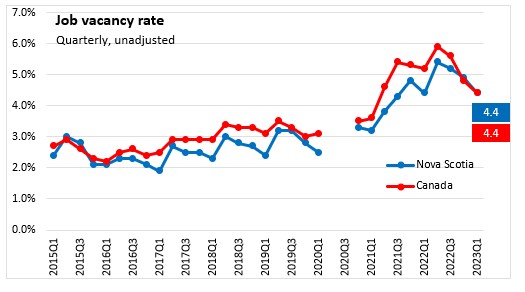
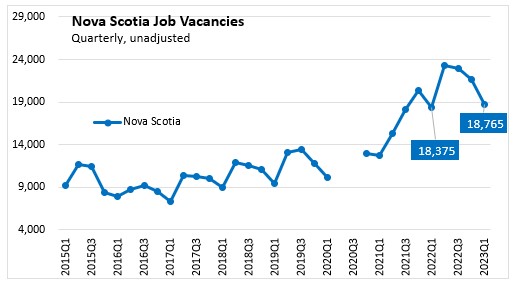
Across Canada, Q1 2023 job vacancy rates were highest in British Columbia and Quebec. The lowest job vacancy rate was reported in Newfoundland and Labrador. Compared to Q1 2022, vacancy rates decreased for seven provinces.
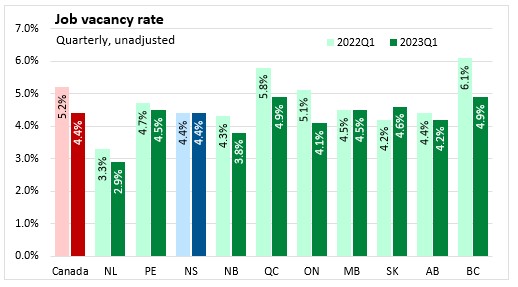
The average wage offered for a vacant position in Q1 2023 was $22.75 per hour in Nova Scotia, up 8.9% from $20.90 in Q1 2022. The national average wage increased to $25.40 per hour, up from $24.20 in Q1 2022.
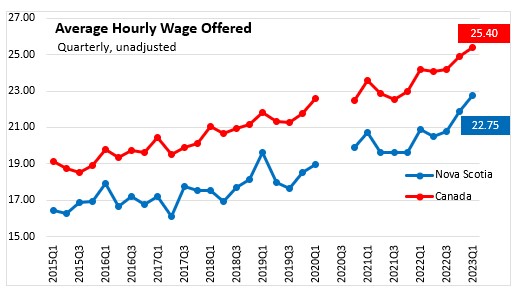
Compared with Q1 2022, the average wage offered increased 5.0% nationally. Average wages on vacant positions were highest in Ontario, Alberta and British Columbia, and lowest in the Maritimes. Average wages offered on vacant positions increased in all provinces.
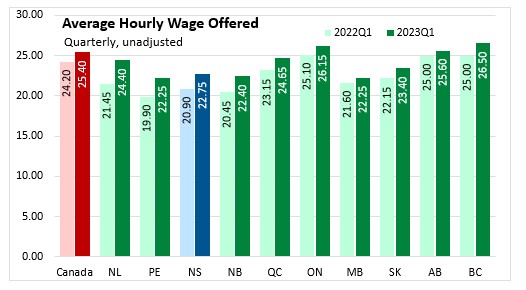
Among Nova Scotia's economic regions, Q1 2023 job vacancy rates were highest in North Shore and Southern Nova Scotia. Cape Breton, the Annapolis Valley, and Halifax had lower job vacancy rates compared to the same quarter in 2022.
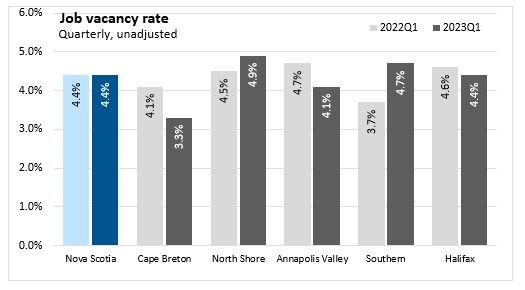
Compared with Q1 2022, average wages on vacant positions increased in all regions.
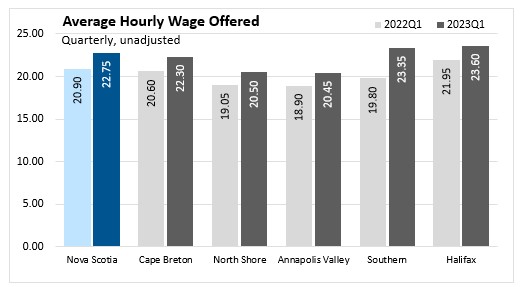
Across sectors with available data, Nova Scotia's Q1 2023 job vacancy rates were higher than the national average in construction, manufacturing, wholesale, finance/insurance, professional and technical services, administrative and support/waste management and remediation services, and health care and social assistance.
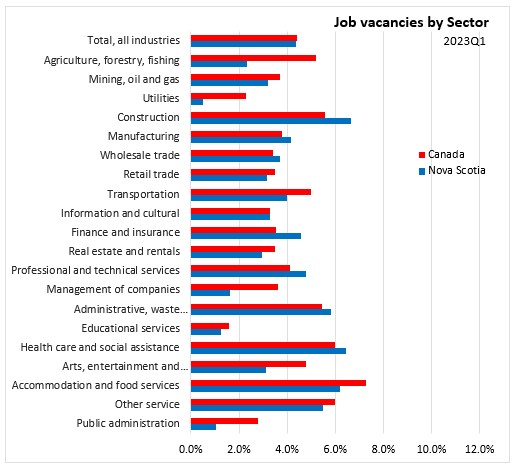
Compared to the national average, the wages offered for vacant positions in Nova Scotia were lower for all sectors in Q1 2023 except utilities and management of companies. The largest wage differences in percentage terms were found in real estate/rentals, mining/oil/gas, construction and manufacturing.
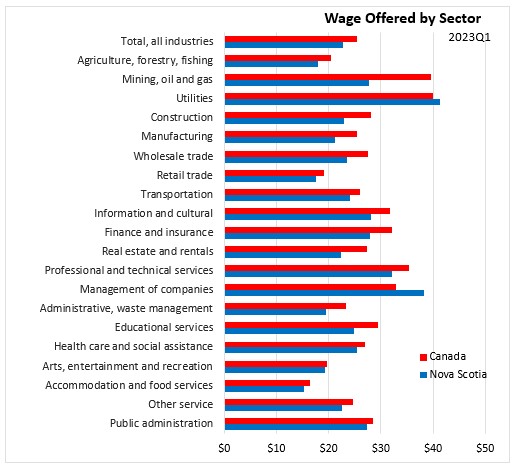
Across sectors with available data, Nova Scotia's job vacancy rates increased the most compared to Q1 2022 in construction, wholesale trade, finance/insurance and arts, enterntaintment and recreation. Suppressed data are labelled as 'n/a'.
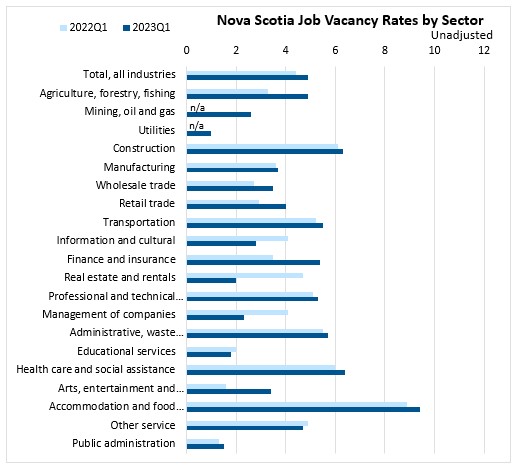
For sectors with available data, Nova Scotia's average hourly wages on vacant positions were highest in utilities, and professional and technical services. The fastest percentage wage gains (Q1 2023 vs Q1 2022) were in management of companies, other services (personal/repair), transportation and administrative/support/waste management.
Average wages on vacant positions in mining, oil and gas, retail trade, finance and insurance, real estate and rentals, and public administration declined over this period.
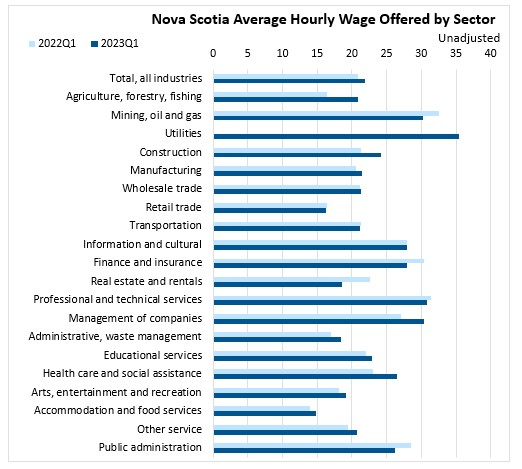
Of the 18,765 job vacancies reported in Nova Scotia during Q1 2023, the largest number (5,850) were in sales and service occupations. Sales/service vacancies stayed the same compared to the same quarter of 2022. Among occupations with data, vacancies increased the most in health.
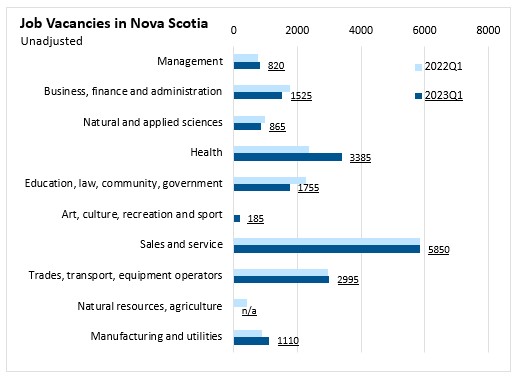
Average wages offered on vacant positions in Nova Scotia during Q1 2023 were highest for natural/applied sciences and management occupations. Occupations in sales and service and manufacturing and utilities had the lowest wages offered on vacant positions in Q1 2023.
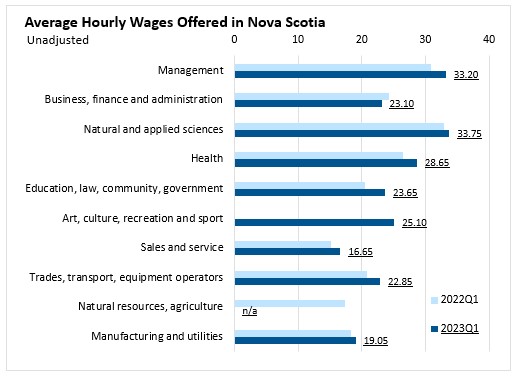
In Q1 2023, 58.3% of vacant positions in Nova Scotia required high school or lower levels of education, down from 58.9% of vacancies in Q1 20221. In percentage terms, vacancies increased the most for positions that require a university degree below bachelor's level.
Wages offered for vacant positions requiring high school or lower education were on average less than wages offered on vacancies requiring more education. The fastest growth in wages offered (compared to Q1 2022) were for positions requiring a non-university diploma. Wages offered were up compared to the same quarter in 2022 for all education levels.
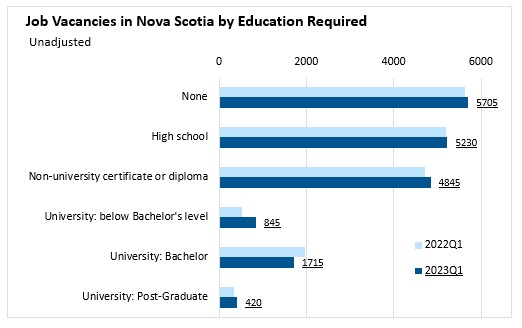
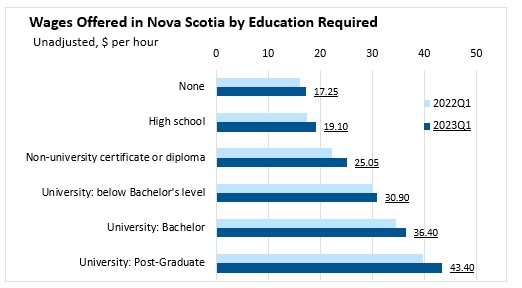
The number of vacant positions requiring less than one year of experience increased 8.3% compared to Q1 2022. The average wage offered on vacant positions increased for all experience categories.
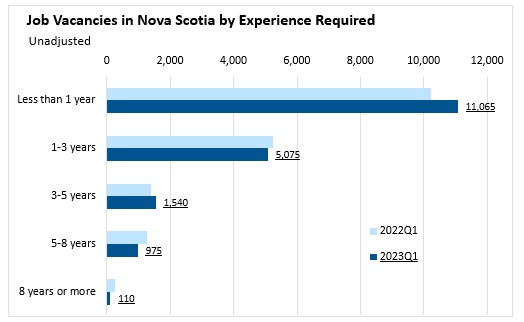
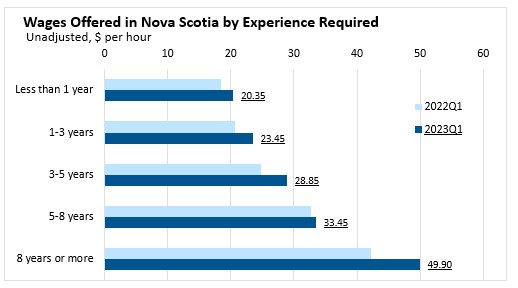
Notes: Data collection activities were suspended from the start of the pandemic in March to September 2020. There remains a gap in the dataset for this survey.
This release provides data on the portion of jobs in a particular region, sector or occupation that are vacant. It also provides information on the wages offered on vacant positions as well as education and experience requirements. A higher job vacancy rate indicates a tighter labour market where it is more difficult for employers to find suitable candidates for the positions offered. A lower job vacancy rate signals labour market slack and potentially more job seekers competing for each vacant position.
JVWS data are not seasonally adjusted. Therefore, quarter-to-quarter comparisons should be interpreted with caution as they may reflect seasonal movements.
Source: Statistics Canada.
<--- Return to Archive